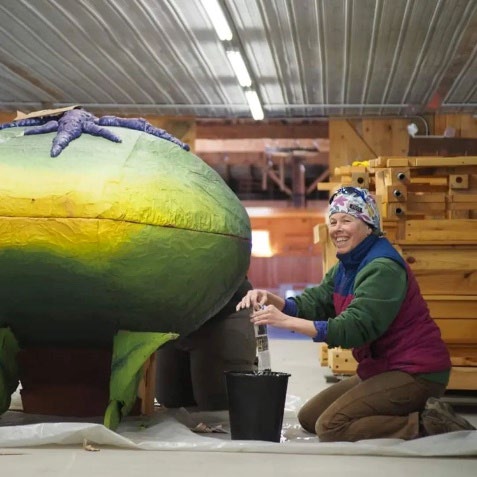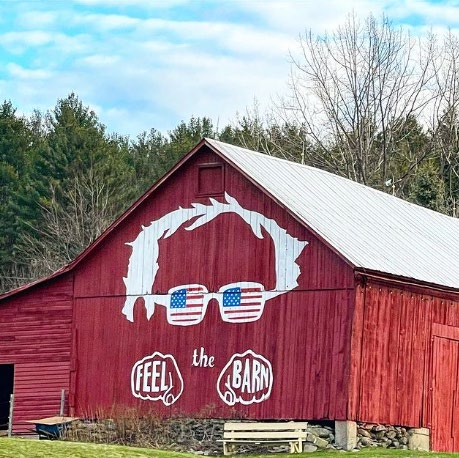Williston's land use regulations and other municipal policies actively support public art, public and private community gathering spaces – known as third places – and inclusive features in community design. Williston has identified, evaluated, and fixed local policies that inhibit the growth of the creative economy.



Chapter 2
Arts And Social Infrastructure
Introduction
Goals: In 2050, Williston is...
Livable
...because people do not have to go far to experience the fullness and richness of life. A vibrant arts community is supported by accessible spaces. We are a tightly knit community, more connected to one another, and more stable in the face of a rapidly changing social environment.
Resilient
...because of a thriving arts community. These connections and friendships become the critical support networks Vermonters and Willistonians rely on when we are confronted with challenges. Performance spaces become mutual aid hubs, social connections are leveraged during crises to meet individual and community needs, and artistic expression is a powerful tool for coping with change.
Equitable
...because there are indoor and outdoor spaces for people to come together. Where underrepresented populations experience higher levels of social isolation and its impacts, the support of Social Infrastructure and the Arts is even more critical.
Three Things to Know
COMMUNITY ORGANIZATIONS AND LOCAL BUSINESSES ARE CRITICAL TO OUR INDIVIDUAL AND COLLECTIVE HEALTH AND WELLBEING.
Numerous local non-profits, grassroots organizations, faith-based and religious organizations and other non-municipal groups provide opportunities for community members to create relationships, participate, and give back to the Williston community.
ARTS AND CULTURE ACTIVITIES HAVE A QUANTIFIABLE ECONOMIC IMPACT IN OUR REGION.
In the greater Burlington Area, event-related spending by arts and culture audiences total $31.5 million and total industry expenditures (FY2022) by organizations was nearly $62 million.
WILLISTON'S PEOPLE ARE NOT IMMUNE FROM THE NATIONWIDE SOCIAL ISOLATION AND LONELINESS EPIDEMIC.
A shrinking household size and aging population means more people are physically and socially isolated. Most households are only accessible by personal vehicle, and some are not able to safely walk or bike to access necessities or parks.
Three Things Public Engagement Told Us
WILLISTON'S PEOPLE VALUE LOCAL BUSINESSES, BALANCED BUSINESS DEVELOPMENT, AND EQUITY IN THE LOCAL ECONOMY
When asked about the economy, people would like to see more unique small businesses and shops, public gathering spaces, and restaurants and cafes in both Taft Corners and the Village. These types of businesses often support the arts, or are run by or for the art industry. A challenge is the high rent for commercial space, which can often prevent small organizations and businesses from forming or locating in Williston.
WILLISTON'S PEOPLE SAY COMMUNITY IS THE SECOND-BEST THING ABOUT WILLISTON AND COMMUNITY AND EVENT SPACE IS THE SECOND BIGGEST NEED.
People said the first best thing was the Town's convenient location, and the first biggest need is more sidewalks and multiuse paths. There were many positive comments about the Library, its many offerings, and need for more facility space.
WILLISTON'S PEOPLE SAY THAT IT LACKS PUBLIC ART, PUBLIC EVENT SPACES, AND PUBLIC-PRIVATE BRANDING AND WAYFINDING.
Taft Corners is an economic driver for the community, and yet to date, it does not have a public park or public art. The Village is the civic center of the community, and yet it lacks the branding and placemaking elements that typically define Vermont village centers (light posts and banners, signage, benches, and public artwork). Indoor and outdoor meeting and event spaces are limited and in high demand.

Public Art is an Economic Driver
Third Spaces are Important Places
Social Health is Public Health
The COVID-19 Pandemic
Objectives, Strategies and Actions
Objectives
Williston creates and enhances public indoor and outdoor spaces to provide a greater quantity and diversity of indoor and outdoor public gathering spaces that are available to all people in Williston for active and passive social interaction.
A 'uniquely Williston' identity is developed, promulgated, and strengthened because Williston programmatically supports and participates in public-private partnerships that enhance the local and creative industries.
Strategies
Enhance existing and create new intergenerational, public "third places" such as public facilities, buildings, parks, and multimodal transportation spaces that are functional and interactive for children, the elderly, and people with disabilities. The third place refers to the social surroundings that are separate from the two usual social environments of home and workplace.
Integrate beauty and character into the design of public spaces and multimodal transportation infrastructure in a manner that facilitates social interaction, especially among the populations most at risk for social isolation.
Ensure that outdoor seating and pocket parks are accessible throughout town.
Provide indoor and outdoor spaces to foster social engagement during winter months.
Support arts and creative enterprises through library and recreation programming.
Develop a 'Uniquely Williston' identity and branding package
Evaluate and explore new land use regulations to support social interaction and the creative sector.
Support public art.
Evaluate town policies for the use of municipal property and temporary events.
Facilitate the coordination and visibility of Williston's arts and creative economy by developing Public-Private Partnerships.
Support the creation of an independent Williston Arts and Business Association (WABA).